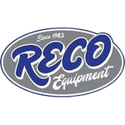How To Use Tractor Attachments
 Your tractor is a powerful and dependable piece of farm equipment that can bring a lot of utility to your enterprise. To increase its versatility, you can get a number of different attachments that are compatible with your model. These can help you get a lot done, from digging to tilling to mowing to excavation and much more.
Your tractor is a powerful and dependable piece of farm equipment that can bring a lot of utility to your enterprise. To increase its versatility, you can get a number of different attachments that are compatible with your model. These can help you get a lot done, from digging to tilling to mowing to excavation and much more.
At RECO Equipment, we're your local agricultural attachment dealer and we like to help our clients get the best results from their machines. That’s why we’ve compiled this informative guide about tractor implements. If you want to check out tractor attachments for sale in Ohio, Indiana or Pennsylvania, get in touch with us to see our wide selection!
Before You Begin
The first thing to do is to go through your owner’s manual to learn more about your tractor model. This will apply whether you’re a first-time attachment user or a veteran. Each model is different and so are the attachments that it’ll be compatible with. It’s a good idea to read the manual to get the specific guidelines and information you need right from the manufacturer. This is going to be the best source of information on how you can use your machine and what to expect from it.
As far as the tractor attachment is concerned, make sure it is a good condition. Inspect all the guards and shields to ensure they’re in place and working as they should. Check the guards around power take-off shafts, gearbox, and any other moving part of the equipment. Examine any hydraulic lines for leaks or other damage, and make sure the connections are tight and secure.
Loading Implements
A tractor hitch is designed so the downward and rear force during a pull stay below the tractor’s center of gravity. To keep the angle of pull low, always hitch the implement to the drawbar. If you pull anything at an angle higher than the center of gravity, it will most likely cause an overturn. Even smaller lawn or garden tractors can flip without a proper hitch.
When you’re going to hitch an attachment to the drawbar, begin by positioning your tractor to align the hole in the drawbar with the one in the hitch. It’ll take a few tries to get this done correctly but you should improve with practice! Then put your tractor in park or set the brakes and attach the implement.
Be sure to use the right hitch pin and security clip because it’s dangerous to use random objects. Raise the implement jack stand and make sure the wheels can move freely. Then connect the PTO shaft, hydraulic hoses, and any electrical connections as required by the specific equipment.
If you’ve got a 3-point hitch, move the tractor drawbar forward before you position the tractor to align the pinholes and draft arms with the hitch points of the implement. You can raise or lower the draft arms to ensure correct alignment. With the equipment off and brake engaged, attach the left draft arm (using the right sized hitch pin and clip!), then adjust and connect the right arm. After that, you can start the tractor and raise the arms with hydraulics as needed.
You want to match the top link of the 3-point hitch to the attachment’s upper hitch point. To lengthen the reach, raise the lift arms or drive ahead with implement down to adjust if needed. The implement may not be level if the upper link has been adjusted too many times, so you might need to re-level before you can safely operate the implement. Finally, attach the upper hitch pin and security clip.
Ground-Driven
Tractor attachments like disks, harrows, rakes, and some spreaders are often ground-driven. You should ensure you pull them into “transportation position” when traveling on public roads.
Power Take-Off
When PTO is used, the implements are powered by the tractor’s drivetrain. This is one of the most popular methods of powering tractor attachments. PTO adds some extra safety measures to your tractor’s operation, and you shouldn’t take it lightly. The PTO spins quickly enough to grab and pull anything in and under the tractor, so loose clothing and long hair are not advised for operators. The guards and shields should be in good condition and you should only hitch and connect any attachment when the tractor is powered down.
Hydraulics
If you’re going to be using hydraulics to power your tractor attachments, keep in mind that hydraulic fluid will always be pressurized. You have to wear proper safety glasses or a face shield when working with such a system. For hydraulics to function correctly, they need to have clean oil and proper lubrication to avoid overheating. The extreme pressure also makes leaks likely, so any sign of leaking fluid is a sure sign to stop working hydraulics and power down until the problem can be addressed.
We hope this information helps you get the most out of any implement you get! For more help or to check out quality tractor attachments for sale, contact RECO Equipment and have a chat with one of our expert staff members. We’re proud to be the chosen tractor attachment dealer for all our clients from Ohio, Indiana and Pennsylvania!

